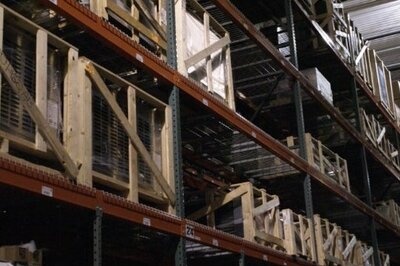Will Your ERP Distribution System Cope With Off-Quality Inventory?
If you are lucky, you work in an industry in which your product is indisputably either good or bad, and there is no debatable area in between. If you are unlucky, your business and industry has product which can be good, sort of good, kind of good, sort of bad, or bad, and your ERP distribution implementation just got exponentially more complicated. Examples of the former category might include chemical products, lawn mowers, butcher knives, and lawn rakes. Examples of the latter category might be sawn lumber, textile products, wallpaper, carpet, and apparel.
Think about trying to manufacture a standard two by four piece of sawn lumber (ignore nominal dimensions for the purpose of discussion). If you manufacture to those dimensions, and if the board is straight, you will get the full asking price. But what if the stud is not perfectly straight? Should it be thrown away? Or would someone be willing to use it for a little bit less price? What if it was slightly cracked? What if one of the dimensions was a little bit off? The fact of the matter is, lumber almost always has some degree of defects, and many different prices depending on the number and type of defects.
Drowning in Material Numbers
How would you account for this in your ERP distribution system? Do you have only one material number for all varieties of two by four, and try to attach some sort of characteristics to the material indicating the quality level (Warning: you probably cannot price by material characteristic without customization)? Going to the other end of the spectrum, should you try to establish different material numbers for different quality levels of a two by four? This leads to potentially infinite numbers of materials; you could have a material for a crooked piece, and a material number for a piece with a chunk out of it; and one for a piece with bad knot holes; then do you start needing one for knot holes and crooked, chunk out and crooked, chunk out and knot holes and so on?
Legacy warehouse management systems often resolved this complication by having an attribute called “grade” that was associated with a serial number or handling unit, and connected to price, cost, and quality management. Not all warehouse management systems have this type of capability, and if yours does not (and do not be falsely assured if your vendor says they have “something similar”; it won’t be), you have some difficult choices in front of you.
The purest choice that you can make for your ERP distribution system is to make quality a black and white issue, and solve the problems that create variable product. Sometimes, a little bit of serious financial analysis can demonstrate that you spend more managing off-quality inventory than you recover from the subsequent sale – or alternatively, that it rarely sells.
Good luck with this one, because it will be an emotional discussion no matter how you frame it.
Free white paper

ERP Implementation: 9 steps to success
The 9 proven steps you should follow when implementing ERP

Related articles
-

ERP Automation Tips for Your Supply Chain
Learn about the stages in your company’s supply chain which can be optimized through ERP automation.
-

Secret KPI: Why Your ERP Implementation Team Matters More Than Software
Learn how Godlan ensures successful ERP implementation for manufacturers with proven strategies &...
-

3 New Year's Resolutions for Your Distribution ERP Project
Resolutions for improving your distribution business using ERP data.

